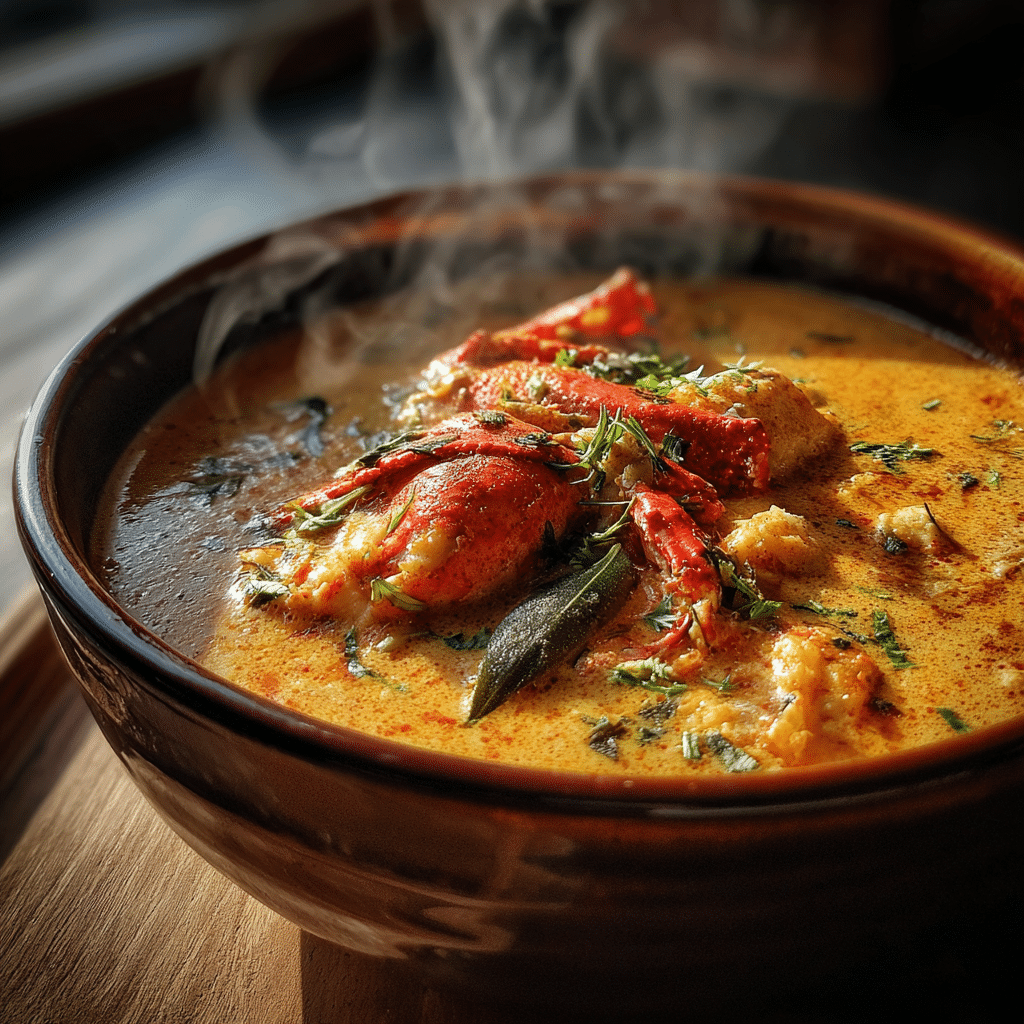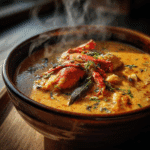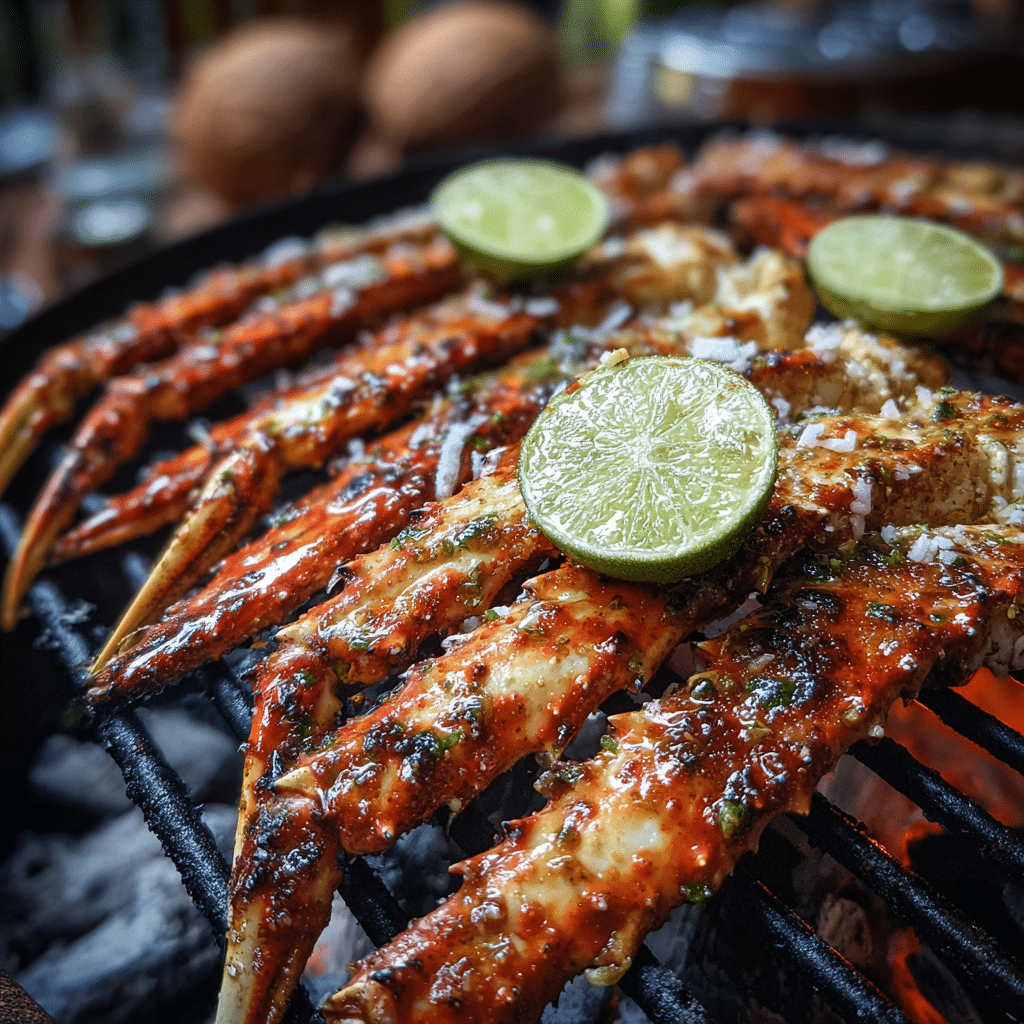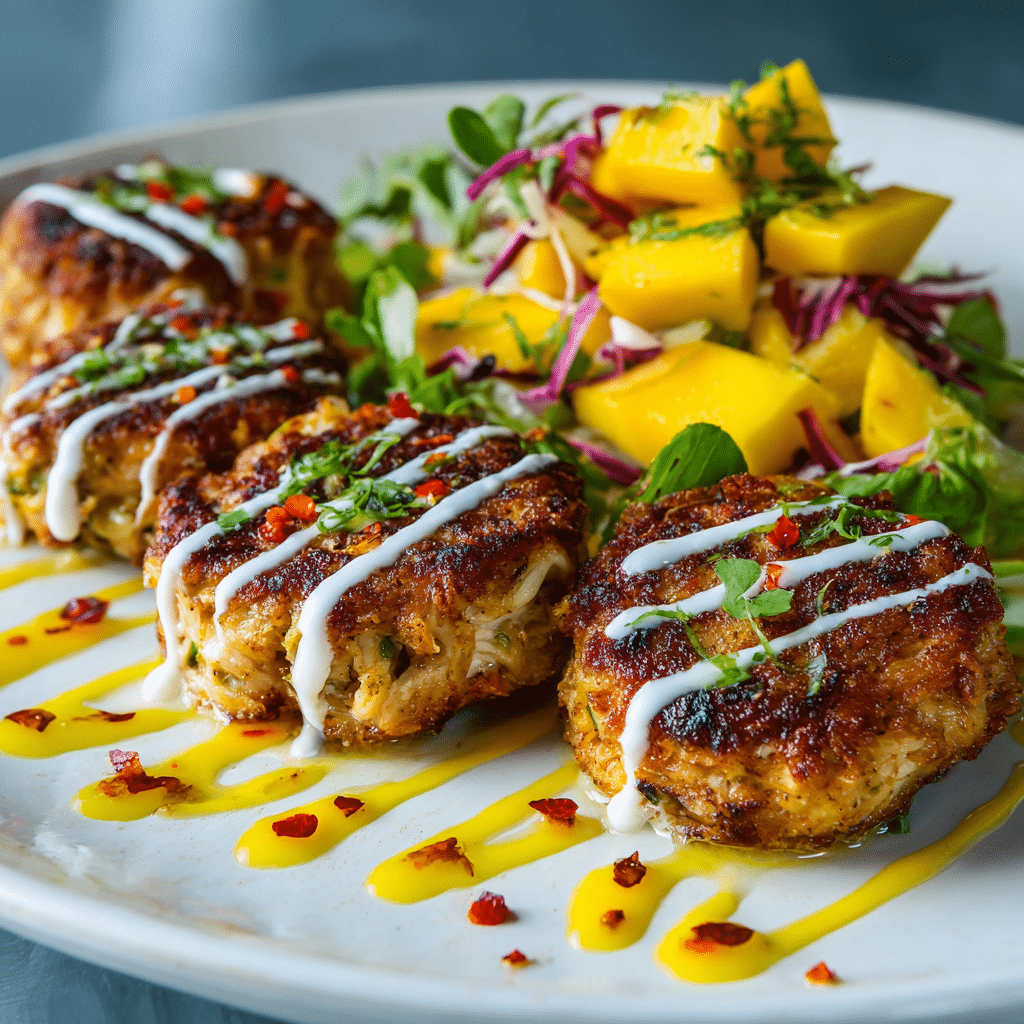Crab and coconut have always been more than just flavors to me—they’re part of my culinary heritage. Growing up in a coastal family, the scent of simmering coconut milk and freshly steamed crab wasn’t just food, it was a way of life. Every weekend, we gathered around my grandmother’s wooden table while she prepared rich crab and coconut curry, using only the simplest, freshest ingredients from the land and sea. Those meals shaped not just my taste, but my passion for food.
In this article, we explore the timeless magic of pairing crab and coconut—a combination that’s taken center stage in kitchens across Southeast Asia, the Caribbean, and now even modern American cuisine. From traditional recipes and expert cooking tips to nutritional benefits and cultural insights, this guide dives deep into why crab and coconut deserve a permanent place in your recipe rotation. We’ll also answer common questions like “Can crabs eat coconut?”, “Are coconut crabs legal in the US?”, and “What exactly makes a coconut crab so unique?”
Don’t miss our Parmesan Crusted Chicken with Creamy Garlic Sauce if you’re craving more comforting, flavorful dinner ideas. Now let’s begin by understanding where the love for this iconic tropical duo began.


Crab and Coconut: Your New Favorite Exotic Flavor Combination
- Total Time: 40 minutes
- Yield: 3–4 servings 1x
Description
This spicy coconut crab curry blends the rich sweetness of coconut milk with tender crab meat and aromatic tropical spices. A signature crab and coconut dish inspired by coastal and island cuisines, perfect for a comforting main course that brings bold flavor and warmth to your dinner table.
Ingredients
1½ lbs fresh blue crab or Dungeness crab (cleaned and cut)
1 can (13.5 oz) full-fat coconut milk
½ cup freshly grated coconut (optional)
1 medium onion (chopped)
3 cloves garlic (minced)
1 inch fresh ginger (grated)
2 tsp red chili powder (adjust to heat preference)
½ tsp turmeric
1 tsp ground coriander
6–8 curry leaves or 3 kaffir lime leaves
1 tbsp coconut oil
1 lime (juice and zest)
Salt to taste
Fresh cilantro (for garnish)
Instructions
1. Sauté Aromatics: In a deep pan, heat coconut oil and sauté onion until soft. Add garlic and ginger and cook for another minute.
2. Toast Spices: Stir in chili powder, turmeric, coriander, and curry leaves. Let the spices toast for 30 seconds.
3. Simmer Sauce: Pour in the coconut milk and bring to a light simmer over medium heat.
4. Cook the Crab: Add the crab pieces and grated coconut. Cover and cook for 10–12 minutes, or until crab is fully cooked and infused with the sauce.
5. Finish & Serve: Stir in lime juice and zest. Adjust seasoning. Garnish with cilantro and serve hot with jasmine rice or flatbreads.
Notes
Blue crab is traditional, but Dungeness works equally well.
Add more chilies or chopped green peppers for heat.
For a thicker curry, reduce coconut milk slightly longer before adding crab.
Leftovers keep in the fridge for up to 2 days.
- Prep Time: 15 minutes
- Cook Time: 25 minutes
- Category: Main Course
- Method: Simmering / Stewing
- Cuisine: Tropical Fusion / South Asian / Island
Nutrition
- Serving Size: 1 bowl (approx. 1¼ cups)
- Calories: 410 kcal
- Sugar: 2g
- Sodium: 650mg
- Fat: 32g
- Saturated Fat: 24g
- Unsaturated Fat: 7g
- Trans Fat: 0g
- Carbohydrates: 8g
- Fiber: 2g
- Protein: 25g
- Cholesterol: 110mg
The Cultural Roots of Crab and Coconut Cuisine
Traditional Dishes Featuring Crab and Coconut Around the World
Across tropical and coastal regions, the union of crab and coconut is far from a trend—it’s a tradition. In the Philippines, dishes like Ginataang Alimango combine blue crab with coconut milk, garlic, chili, and ginger to create a silky, spicy seafood stew often served with rice. In Kerala, India, Njandu Curry features fresh mud crabs steeped in coconut paste and curry leaves, forming one of the state’s most beloved regional dishes.
Jamaica offers its own interpretation with coconut crab rundown, where shredded crab meat is slow-cooked in a thick coconut sauce infused with thyme, scallions, and Scotch bonnet peppers. Meanwhile, in Polynesian cultures, coconut crab is grilled over open flames and basted with coconut water and lime—highlighting a minimalist yet unforgettable flavor approach.
These are not just recipes—they are heritage on a plate. They reflect how resourceful, ocean-bound communities have turned their natural surroundings into rich crab and coconut culinary traditions that are now finding fans across the world.
How Coastal Communities Use Coconut in Seafood Preparations
In coastal kitchens, the coconut isn’t just a fruit—it’s a multi-use marvel. It finds its way into food in numerous forms: grated, toasted, juiced, creamed, fermented, or cold-pressed into oil. For seafood preparations, coconut adds more than flavor—it enhances texture, builds depth, and balances brininess with subtle sweetness.
In South India and Sri Lanka, crab is coated in toasted coconut for added crunch. In the Pacific Islands, coconut milk forms the base of many broths and soups, often combined with lemongrass, turmeric, or tamarind for layers of brightness.
The beauty of crab and coconut pairings lies in their versatility. Whether you’re poaching crab claws in coconut water or sautéing soft-shell crab in coconut oil, this ingredient adapts to every technique. Its richness cuts through spice, its oils help seafood retain moisture, and its naturally sweet profile complements the delicate flavor of fresh crab.
Looking for inspiration? Try our Pink Salt Diet Recipe that offers another example of using whole, natural ingredients to bring out bold, satisfying flavors.
Types of Crabs That Pair Well with Coconut
Blue Crab, Dungeness, and Soft Shell Crabs
When it comes to choosing the right crab for coconut-based dishes, not all species are created equal. The best crabs to pair with coconut are the ones that offer tender, sweet meat and can hold up to bold tropical flavors.
Blue crabs, native to the Atlantic Coast and Gulf of Mexico, are prized for their mild yet sweet taste. They’re excellent for coconut curries, as their meat absorbs the flavor of rich sauces without overpowering it. In dishes like Filipino Ginataang Alimango, blue crab becomes the star ingredient when slowly simmered in thick coconut milk.
Dungeness crab, commonly found along the Pacific Northwest, brings a slightly nutty, more complex flavor to the table. Its firm texture works well in baked or grilled crab and coconut dishes where coconut milk is used as a glaze or marinade. A Dungeness crab coconut bake topped with shredded coconut and breadcrumbs offers both crunch and creaminess.
Soft shell crabs, often enjoyed whole, are ideal for quick sautés or deep-fried preparations using coconut oil. The entire crab can be flash-fried and then tossed in a coconut-ginger sauce for a fast, crowd-pleasing crab and coconut meal.
These crabs adapt well to different preparations and elevate tropical dishes with the perfect balance of richness and subtlety.
The Infamous Coconut Crab: Species, Legality & Culinary Use
One of the most fascinating creatures associated with this pairing is the coconut crab, also known as the robber crab. Unlike its aquatic cousins, the coconut crab is a terrestrial crustacean, known for its size, strength, and coconut-cracking claws. Native to islands in the Pacific and Indian Oceans, this crab earned its name from its unique ability to climb trees and crack open coconuts with ease.
Despite its culinary reputation in some cultures, the coconut crab is illegal to harvest or consume in many parts of the United States, due to its protected status and slow reproduction rate. In places where it is legally consumed—such as parts of Micronesia and the Cook Islands—locals often grill the crab whole or simmer it in coconut-based broths, producing a gamey, slightly sweet meat that’s considered a delicacy.
From a sustainability standpoint, most chefs and food experts recommend avoiding coconut crab and sticking to more widely available species like blue or Dungeness. Their similar flavor profiles and better sourcing options make them the ideal picks for crab and coconut recipes.
Check out the High-Protein Cottage Cheese Chocolate Mousse for another unique twist on classic ingredients—just like this pairing.
Cooking with Crab and Coconut – Techniques and Tips
Using Coconut Milk vs. Coconut Cream in Crab Dishes
When preparing crab and coconut recipes, your choice between coconut milk and coconut cream will influence the final taste and texture. Though both come from the flesh of mature coconuts, they serve different purposes.

Coconut milk is thinner and ideal for simmering. It’s the go-to for dishes like crab and coconut stew, curry, or soup. The milk blends with spices and seafood to create a fragrant, silky broth that carries the flavor of crab without overpowering it.
Coconut cream, on the other hand, is richer and denser. Use it in baked crab casseroles, creamy coconut crab dips, or decadent bisques. It’s also perfect for thickening sauces where you want to coat the crab thoroughly and create a more indulgent experience.
| Ingredient | Texture | Best Used For |
|---|---|---|
| Coconut Milk | Thin, pourable | Curries, soups, light crab and coconut stews |
| Coconut Cream | Thick, spoonable | Baked dishes, dips, sauces, thick fillings |
Pro Tip: Use coconut milk for cooking, then finish with a dollop of coconut cream for added richness. It keeps the balance between light and hearty.
Grilling, Steaming, or Baking: Which Method Elevates Flavor Best?
The way you cook your crab and coconut dishes affects not just the texture, but how the flavors develop.
- Grilling: When whole crabs or legs are grilled and basted with coconut oil or glaze, the result is charred, aromatic, and slightly smoky. Grilled crab and coconut platters pair well with mango slaw or rice salad.
- Steaming: Steaming helps retain moisture and brings out the delicate texture of crab meat. Try steaming over lemongrass water, then drizzle a coconut-lime dipping sauce to highlight freshness.
- Baking: Great for casserole-style dishes. A baked crab and coconut pie with breadcrumbs, fresh herbs, and spiced coconut sauce is rich, satisfying, and freezer-friendly.
Don’t miss our Parmesan Crusted Chicken with Creamy Garlic Sauce if you’re planning a deliciouse companion to balance out your creamy crab and coconut dishes.
Tropical Crab Recipes with Coconut You’ll Love
Spicy Coconut Crab Curry
A signature tropical comfort dish, spicy coconut crab curry brings out the warmth of chilies and the creaminess of coconut in perfect balance. This dish highlights everything great about the crab and coconut pairing.
Ingredients:
- Fresh blue crab or Dungeness, cleaned
- 1 can coconut milk
- Freshly grated coconut (optional)
- Onion, garlic, ginger
- Red chili, turmeric, coriander powder
- Curry leaves or lime leaves
- Lime juice, salt
Instructions:
- Sauté onion, garlic, and ginger in coconut oil until soft.
- Add chili, turmeric, and coriander; cook until aromatic.
- Pour in coconut milk and bring to a light boil.
- Add crab and simmer until cooked through.
- Finish with lime and fresh coconut.
This rich crab and coconut curry pairs well with steamed rice or flatbread and delivers layered flavor without being too heavy.
Island-Style Crab Cakes with Coconut Drizzle
This modern take on crab cakes includes shredded coconut for added flavor and texture.

Ingredients:
- Lump crab meat
- Eggs, breadcrumbs, shredded coconut
- Scallions, garlic, lime zest
- Coconut milk (for drizzle)
- Chili flakes, salt
Instructions:
- Mix crab, breadcrumbs, coconut, and seasoning.
- Form patties and chill for 30 minutes.
- Fry until golden in coconut oil.
- Simmer coconut milk with chili flakes and zest for a drizzle.
Serve these crab and coconut cakes with grilled pineapple, a green salad, or roasted plantains. They freeze well and make a great appetizer for tropical-themed dinners.
Looking for a refreshing drink? Try our Cottage Cheese Chocolate Mousse it’s light, soothing, and balances the richness of crab and coconut dishes.
Nutritional Profile and Health Benefits
Protein, Healthy Fats, and Vital Minerals in Crab
Crab meat is a lean, protein-rich seafood that fits into many healthy diets. A single serving (3 oz) offers 17g of protein and is low in calories and saturated fats. Combined with the right kind of coconut, crab and coconut dishes offer much more than just flavor.
Key nutrients in crab:
- Vitamin B12
- Selenium
- Omega-3 fatty acids
- Zinc and copper
This makes crab and coconut meals a smart choice for energy, brain health, and immune support.
Why Coconut Milk Can Be a Healthier Choice
Coconut milk, when used in moderation, brings healthy fats and plant-based richness to recipes. The MCTs (medium-chain triglycerides) in coconut may support metabolism and provide sustained energy.
Health perks of coconut:
- Lactose-free and gut-friendly
- Contains lauric acid (antimicrobial)
- Iron, potassium, and manganese content
So whether you’re preparing a curry or baked entrée, crab and coconut offer a nutrient-dense, satisfying combination. Just choose full-fat, unsweetened coconut milk without additives to keep it clean.
Don’t miss our Parmesan Crusted Chicken Recipe for another protein-rich, wholesome dish that complements seafood-heavy menus.
shell-dependent. Both are interesting creatures in the world of crab and coconut stories, but very different.
What to Serve with Crab and Coconut Dishes
Best Side Dishes: Rice, Plantains, and Zesty Salads
Crab and coconut recipes benefit from side dishes that add freshness or texture. Here are some top choices:
- Coconut Rice – A creamy base that enhances flavor
- Fried Plantains – Sweet contrast to spicy crab curries
- Papaya or Mango Salsa – Adds acidity and color
- Crisp Greens – Balance the richness of coconut-based sauces
- Roasted Root Veggies – Add earthiness to baked crab dishes
Round out your crab and coconut meal with something cooling like our Cottage Cheese Chocolate Mousse for a protein-packed dessert.
Perfect Drinks to Pair: Coconut Water, or Cocktails?
The best beverages with crab and coconut meals offer a refreshing or acidic contrast. Try:
- Sparkling water with lime
- Coconut water chilled with mint
- Tropical mocktails with ginger and citrus
- Herbal teas like lemon balm or lemongrass
Avoid overly creamy or heavy drinks to keep your meal balanced and enjoyable.
Sourcing and Sustainability Tips
Where to Buy Quality Crab and Organic Coconut Products
To get the most from your crab and coconut recipes, start with responsibly sourced ingredients.
- Seafood Markets: Look for wild-caught or farm-raised crab labeled with sustainability certifications
- Reputable Grocers: Choose full-fat, unsweetened coconut milk and organic shredded coconut
- Avoid processed crab: Imitation or overly preserved products lack flavor and texture
Be sure to support brands that offer traceable, ethically harvested options for both crab and coconut.
Avoiding Overfishing and Supporting Eco-Friendly Brands
Overfishing is a growing concern in the seafood world. Choosing sustainable crab and coconut products helps protect ecosystems.
Tips:
- Buy crab during open fishing seasons
- Opt for local crab over imported varieties
- Avoid sourcing or consuming coconut crab
- Check for MSC or Seafood Watch labels
By making small, informed decisions, every crab and coconut dish you prepare becomes a responsible, eco-conscious choice.
Expert Tips, Flavor Twists, and Reader Creations
How to Layer Bold Flavors into Crab and Coconut Recipes
Customize your crab and coconut meals with inspiration from tropical regions:
| Region | Flavor Base | Example Use Case |
|---|---|---|
| Southeast Asia | Kaffir lime, lemongrass, bird’s eye chili | Crab coconut soup with herbal broth |
| India (Kerala) | Curry leaves, turmeric, roasted mustard seeds | Coconut crab masala with rice |
| Caribbean | Thyme, allspice, ginger, Scotch bonnet | Grilled crab in spicy coconut glaze |
| Latin America | Cumin, tomato, lime, fresh oregano | Tomato-coconut crab stew with rice or bread |
Crab and coconut absorb bold flavors easily—build complexity with herbs, then let the coconut mellow the heat.
Reader Creation: Chili-Lime Coconut Crab Bowl
One of our readers submitted a simple, fresh take on crab and coconut that’s perfect for meal prep.

Ingredients:
- Fresh crab meat
- Cooked rice noodles
- Coconut milk
- Chili paste
- Lime zest and juice
- Garlic and herbs (mint or basil)
Prep:
- Sauté garlic and chili in oil, then stir in coconut milk
- Gently warm crab meat in the sauce
- Toss noodles with lime juice
- Combine and top with herbs and a squeeze of lime
This dish is light but rich, balanced with acidity and ideal for anyone new to cooking with crab and coconut.
Conclusion: Why Crab and Coconut Belong in Your Kitchen
There’s something truly timeless about the pairing of crab and coconut. It’s not just a recipe—it’s a cultural fusion, a sensory journey, and a nutritional powerhouse all wrapped into one. Whether you’re crafting a spicy curry, baking a rich crab casserole, or preparing a light noodle bowl with coconut broth, this duo delivers flavor and texture in ways few ingredients can match.
From Southeast Asia to the Caribbean and beyond, generations have leaned on the comfort and versatility of crab and coconut dishes. Now, with fresh takes and easy techniques, you can bring that same magic into your own kitchen. By using clean ingredients, bold seasonings, and sustainable sourcing, you’re not just making a meal—you’re honoring a tradition.
So the next time you’re looking to impress dinner guests or simply indulge in something soulful and satisfying, turn to crab and coconut. With just a few ingredients and a little guidance, you’ll discover your new go-to flavor combo.
Looking for more bold, nourishing ideas? Don’t miss our Parmesan Crusted Chicken Recipe—another unforgettable dish you can master at home.
Find more recipes on our Pinterest and Medium pages—new ones added all the time!
FAQs – Everything You Wanted to Know About Crabs and Coconut
Can Crabs Eat Coconut?
Yes, certain species like the coconut crab (Birgus latro) are known for their ability to crack open and consume coconuts. These land-based crabs use their powerful claws to break through the shell. While most sea crabs don’t naturally feed on coconuts, the unique biology of coconut crabs makes them a fascinating part of the crab and coconut story.
What Do You Serve with a Crab Dinner?
For meals centered around crab and coconut, consider pairing them with sides that highlight contrast or complement richness. Great options include:
Jasmine or coconut rice
Roasted plantains or sweet potatoes
Mango and avocado salsa
Steamed greens with lemon
Ginger-lime spritz or herbal teas
Our Tex Mex Paste is a perfect light companion to any crab and coconut dish.
Are Coconut Crabs Legal in the US?
No. Coconut crabs are protected in many regions and are illegal to capture or eat in the U.S. Their population has declined due to overharvesting, and they are classified as vulnerable. For your next crab and coconut dish, stick to legal alternatives like blue crab or Dungeness.
What Do You Get from Killing the Coconut Crab?
Although coconut crabs yield dense, lobster-like meat, killing them is discouraged due to conservation concerns. Their meat is considered a delicacy in certain Pacific regions, but in the U.S., the focus is shifting toward sustainability in all crab and coconut dishes.
Are Robber Crabs and Coconut Crabs the Same?
Yes. The term “robber crab” refers to the coconut crab’s habit of stealing shiny objects. It’s the same species and an iconic part of the broader crab and coconut narrative, particularly in Pacific cultures.
Is a Hermit Crab and Coconut Crab the Same?
No, they are not the same. While both belong to the Coenobitidae family, coconut crabs grow much larger, lose the need for shells as adults, and live on land. Hermit crabs are smaller, marine-focused, and

